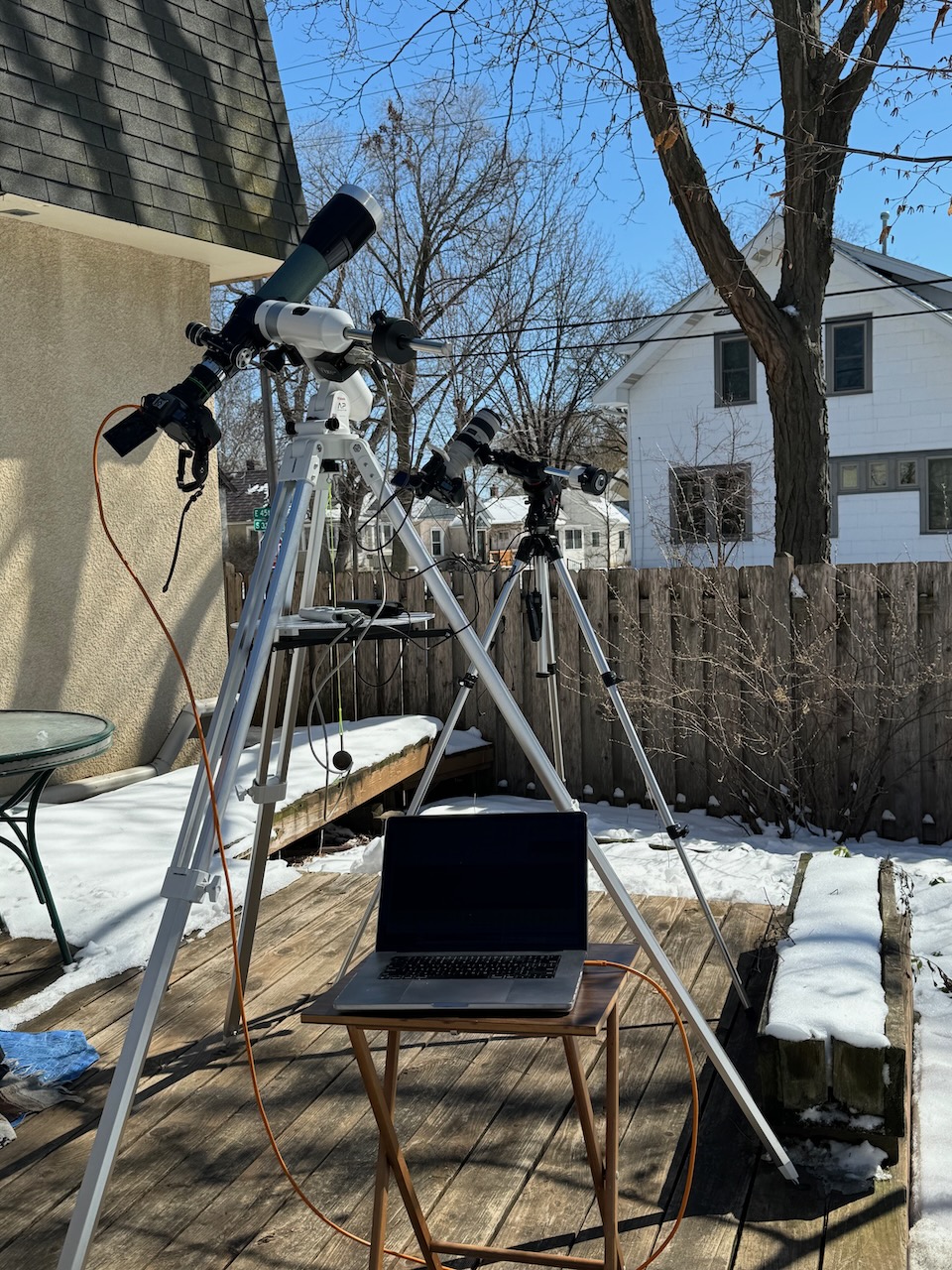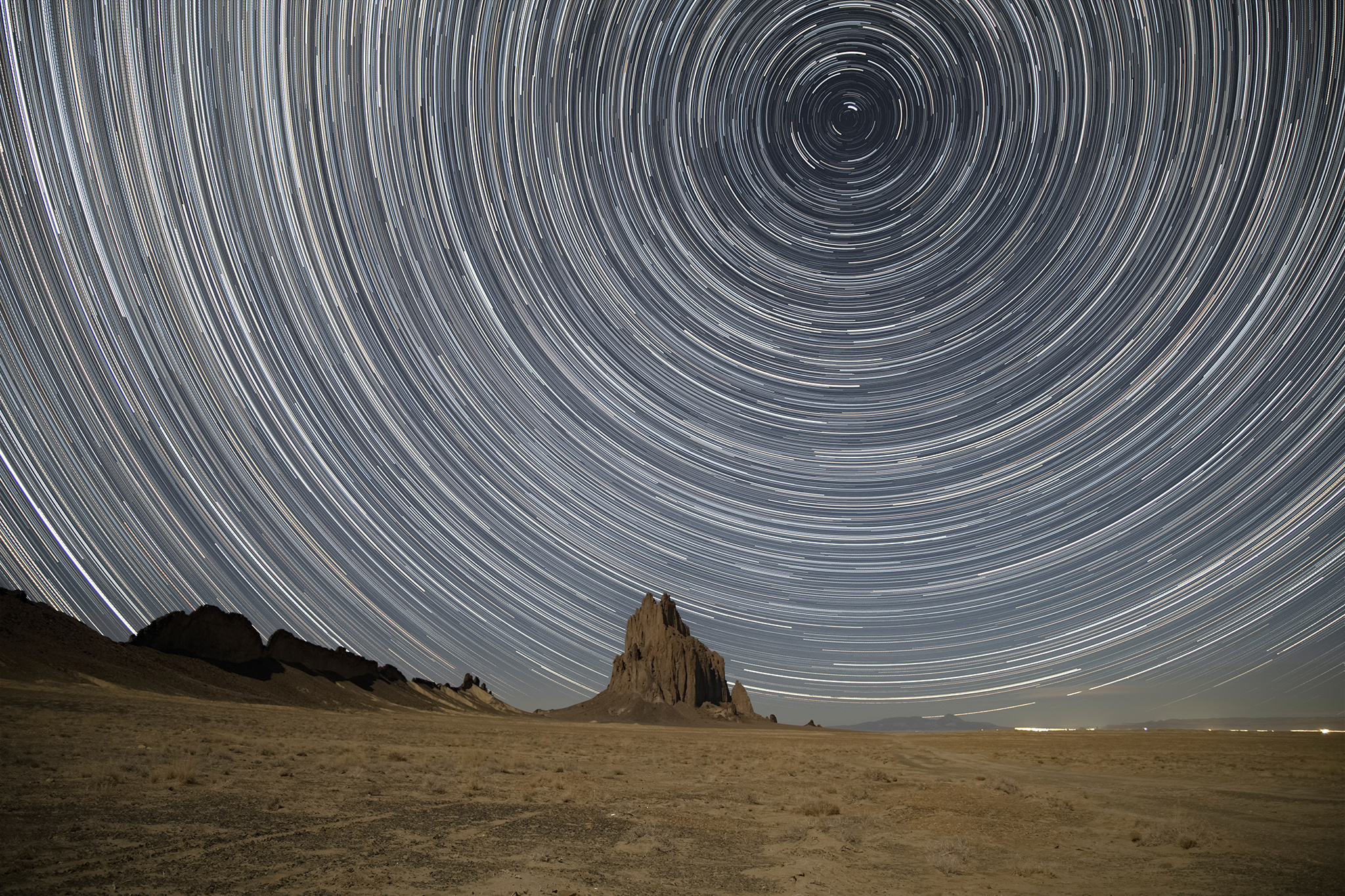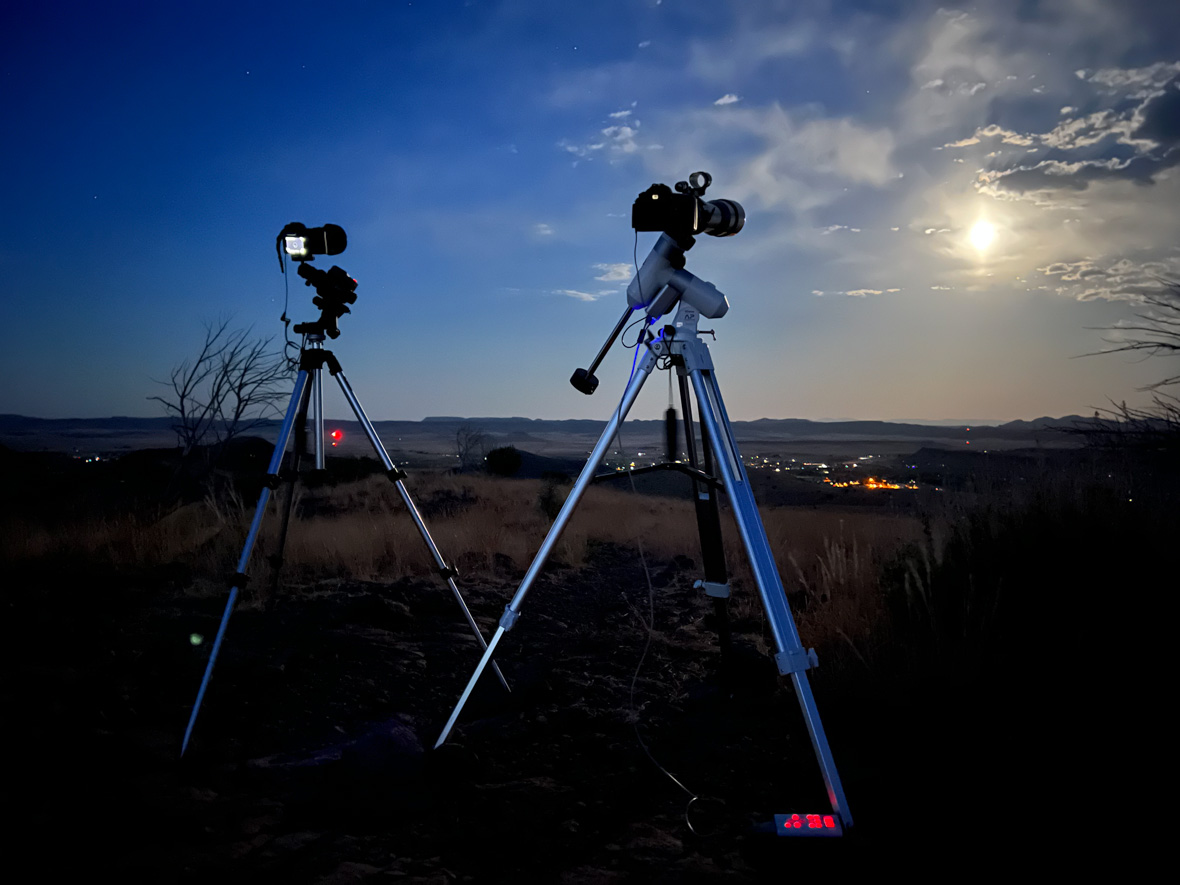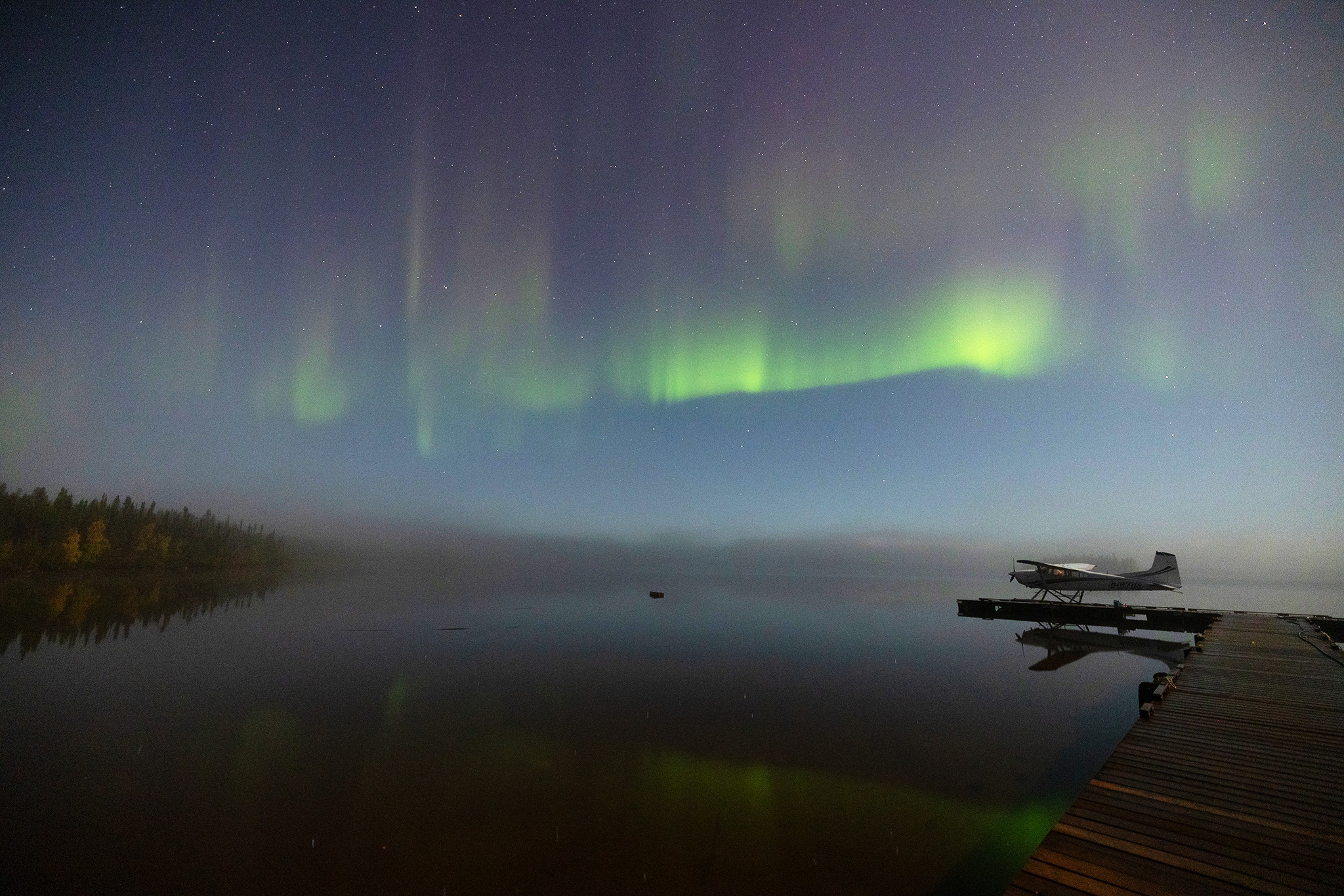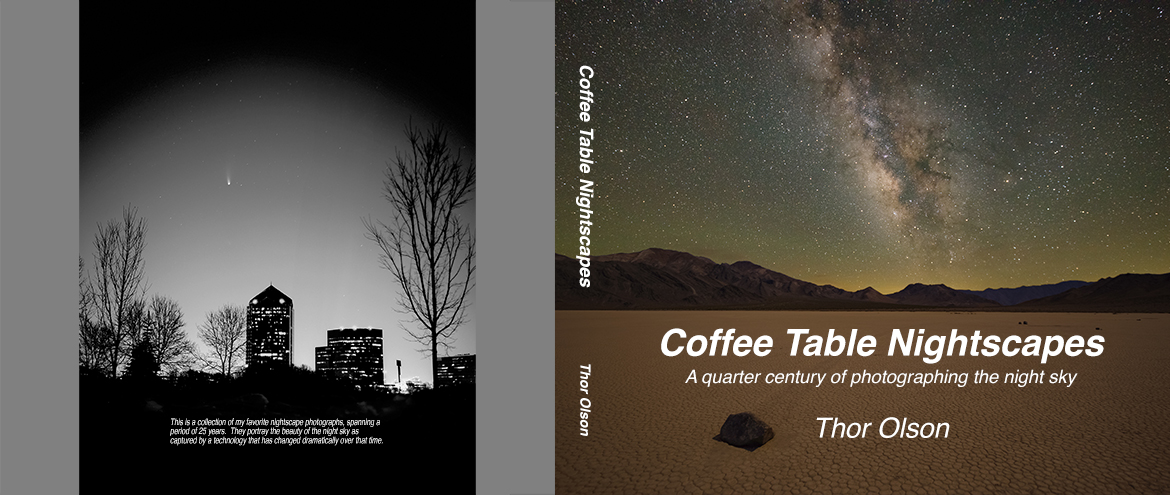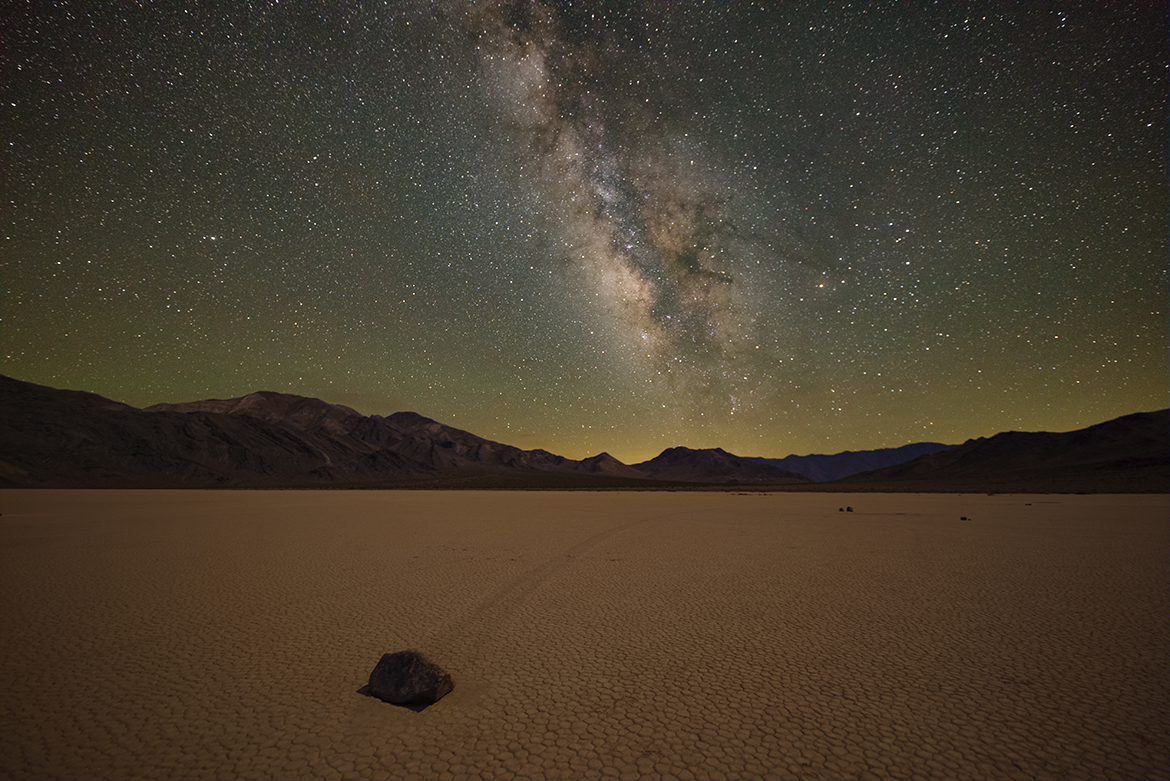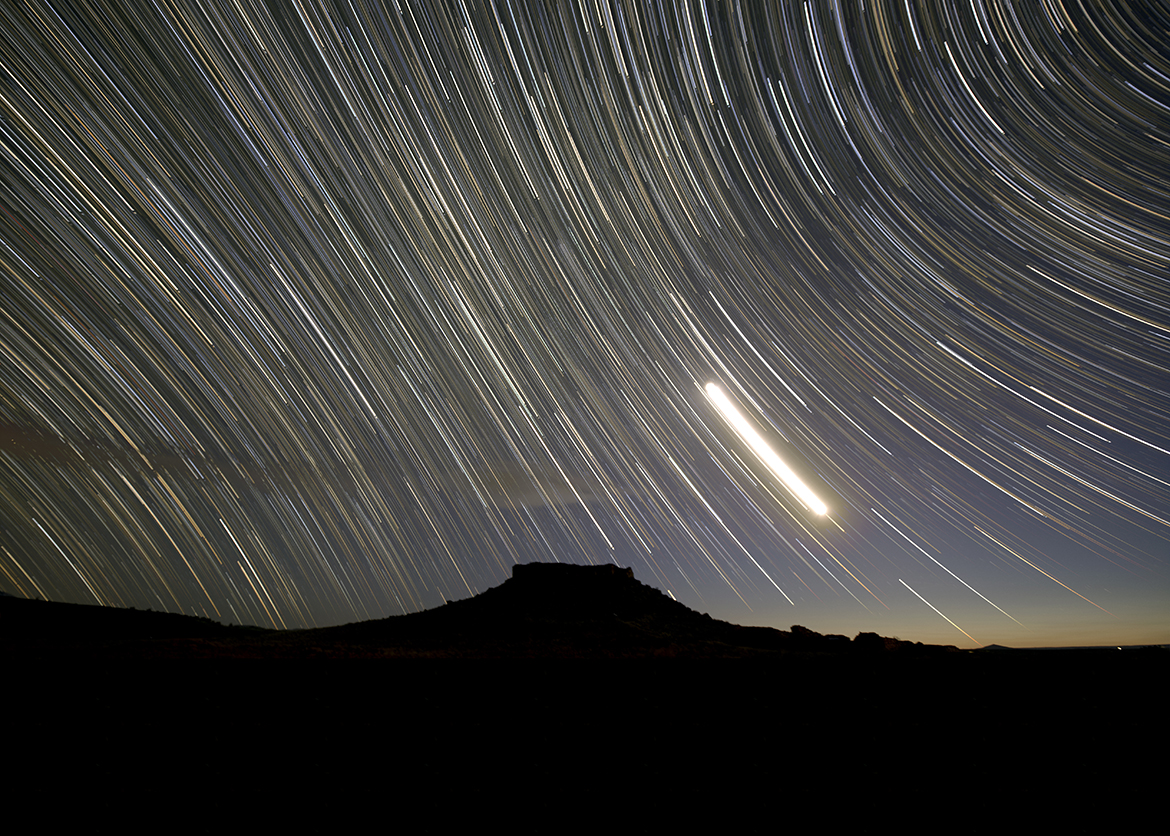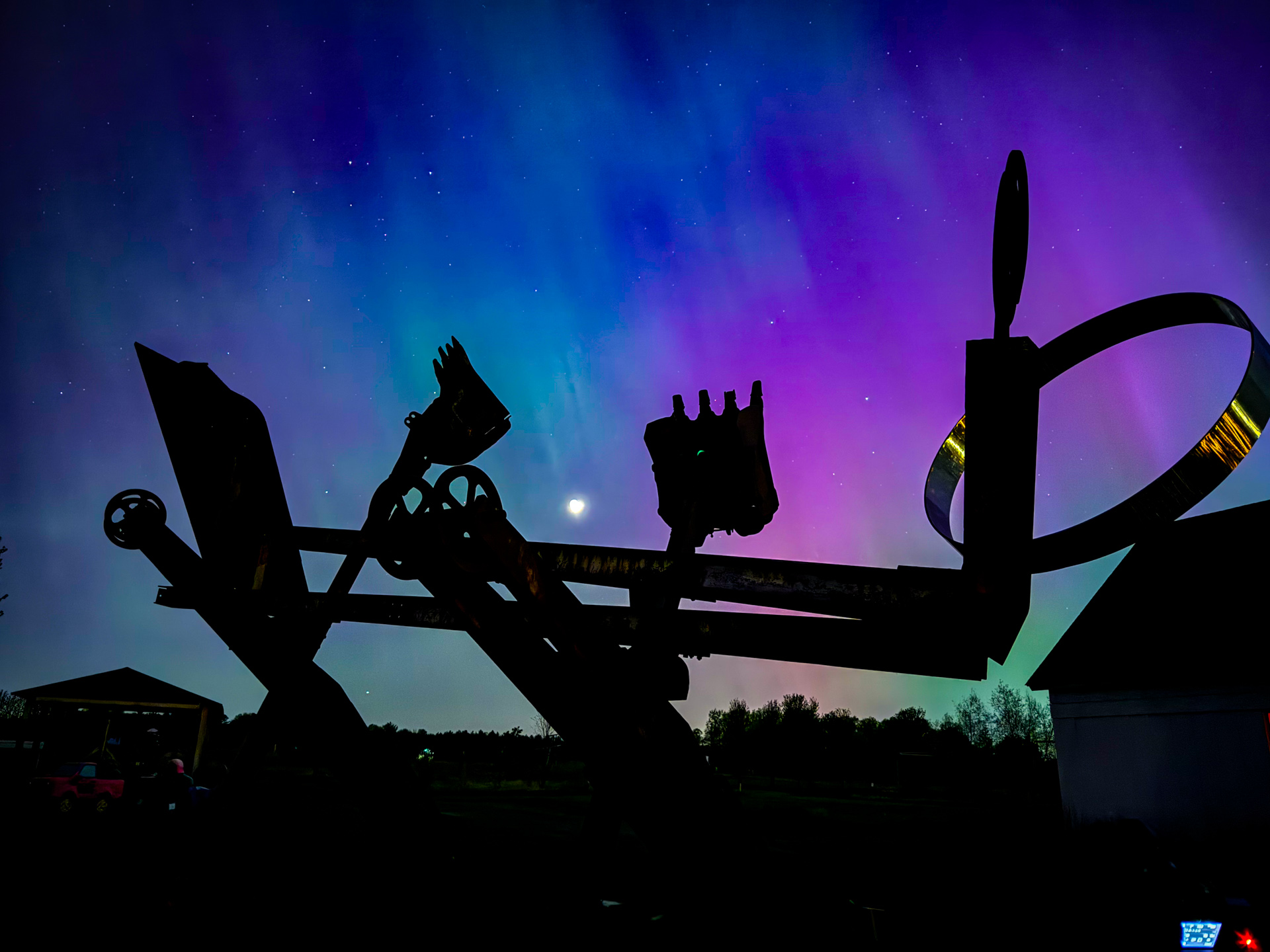
Even if light pollution were not an issue, we’d rarely see the northern lights because our latitude in Minneapolis is outside the normal auroral oval. But last week, Earth experienced a strong geomagnetic storm and we were suddenly in the middle of it! Here was a chance to see aurora without traveling to Alaska or Manitoba! And it was the perfect opportunity to photograph them with my wide-angle lenses, one of which I call my “Milky Way/aurora lens”, a 2-1/2-pound monster for just this purpose! But we needed to get away from the city lights.
There is a sculpture park, Franconia, that Poldi and I have enjoyed and contributed to for many years, and it was less than an hour from home. We arrived before sunset and sought permission to take photos, even after the normal park closing time. As I was scouting for locations and setting up tripods, a trickle of other visitors arrived with the same purpose: to see the predicted northern lights. As twilight faded, the aurora tourists expanded to dozens of vehicles, all of which had headlights that swept across the sculpture park grounds, interfering with my carefully selected compositions.
I have learned not to react to unexpected lighting situations. Oftentimes, they make for interesting photographic results. One of my favorite examples is when I was shooting reflections on a calm alpine lake and a group of partiers arrived and went skinnydipping, breaking up the smooth lake surface. Rather than close the shutter and move on, I kept it open for the duration of my planned exposure. It created a wonderful blend of reflected and scattered light!
Continue reading
